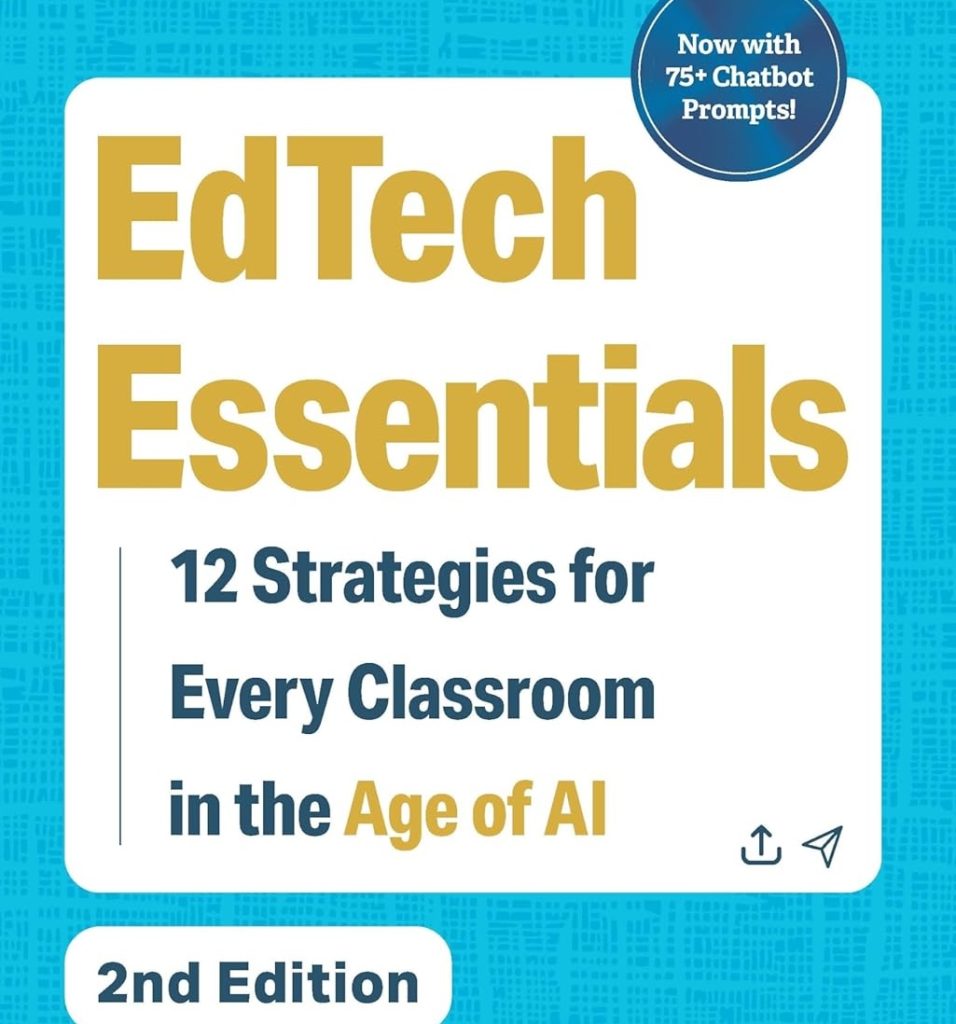
This week’s guest post in by Rod Naquin.
This fall, I’m heading back to the high school English classroom after some time away, and I couldn’t be more excited about the possibilities ahead. The landscape has changed dramatically since I last taught full-time, particularly with the emergence of large language models like ChatGPT becoming commonplace in education.
The Research That’s Got Everyone Talking
Recent headlines about AI in education have been decidedly mixed. A new MIT Media Lab study titled “Your Brain on ChatGPT” has garnered attention for suggesting that AI use leads to “weaker neural connectivity” and reduced cognitive engagement during writing tasks. The research, led by Nataliya Kosmyna, used EEG to monitor brain activity as participants wrote essays with different tools: ChatGPT, search engines, or no assistance at all.
The findings are striking. Students using ChatGPT showed the weakest overall neural coupling, while those writing without any assistance exhibited the strongest, most wide-ranging brain networks. The LLM group also reported lower ownership of their essays and struggled to quote from work they had completed just minutes earlier.
But here’s where I think we need to pump the brakes on the panic. The MIT researchers themselves emphasize crucial limitations that often get lost in sensational headlines. Key study limitations include:
- Small sample size of 54 participants from a specific geographic area
- Single context focus on essay writing only
- Not yet peer-reviewed research
- Testing limited to ChatGPT rather than other AI tools
- No breakdown of writing process into specific subtasks
The authors explicitly warn against using alarmist language like “brain damage” or claims that AI is “making us dumber.” They’re calling for more research, not educational moratoriums. This kind of preliminary work should inform our thinking, not dictate our policies. Dr. Cindy Nebel and Andrew Watson wrote a more detailed analysis of the MIT study’s methodology and implications that you can read here.
What Students Are Actually Saying
What I find more illuminating are the student voices that often get overlooked in these discussions. Jason Gulya recently compiled reflections from three high schoolers about their experiences with AI, and their insights are far more nuanced than much of the adult commentary.
William Liang offers a particularly sharp observation: many students see assignments as “logistical hurdles” rather than learning opportunities. This perspective helps explain why students might turn to AI tools – not necessarily out of laziness, but because our current educational system often prioritizes compliance over genuine engagement.

Olivia Han’s journey is even more revealing. She initially embraced AI for efficiency, telling herself she was “working smarter.” But over time, she noticed something troubling: AI’s voice was gradually replacing her own. What’s remarkable is her conscious decision to step back and reclaim her authentic expression. She chose the harder path to maintain ownership of her thinking and writing.
Mary Ruskell raises perhaps the most profound question of all: how do we build meaningful relationships and understanding when we can’t always distinguish between authentic and artificial content? Her concerns go beyond academic performance to fundamental questions about truth and trust in an AI-mediated world.
My Plan for Thoughtful Integration
These student perspectives highlight why I’m approaching AI integration thoughtfully rather than wholesale adoption or rejection. When I return to teaching, I plan to use AI for what it genuinely does well. AI tools can support:
- Text analysis and pattern recognition for quick assessment
- Example generation across multiple difficulty levels
- Assignment differentiation for diverse learners
- Feedback compilation and organization
- Time-saving on routine administrative tasks
For instance, AI can help me rapidly identify patterns in student writing, suggest targeted feedback, or create assignments for diverse learners. These applications leverage AI’s strengths in pattern recognition and text manipulation while keeping human judgment and relationships at the center of learning.
What I won’t do is use AI as a substitute for the core work of education: helping students develop their own voices, critical thinking skills, and authentic expression. The MIT study’s findings about reduced ownership and cognitive engagement serve as important warnings about what happens when AI assistance crosses the line from support to replacement.
Beyond the Binary Thinking
This distinction matters enormously. Educational researcher Daniel Willingham has long argued that good teaching focuses on student thinking processes rather than just the artifacts students produce. AI tools, used wisely, can actually support this shift by handling routine tasks and freeing up time for deeper engagement with student ideas.
The rhetorical science around AI in education often misses these nuances.
- Preliminary research gets transformed into definitive conclusions
- Complex findings get reduced to binary choices: AI good or AI bad
- Student voices get drowned out by adult anxieties and commercial interests
We need better frameworks for thinking about AI integration – ones that acknowledge both potential benefits and legitimate concerns while keeping student development at the center. This means being intentional about when and how we use these tools, monitoring their effects on learning, and remaining flexible as we learn more.
Essential questions for AI integration include:
- How can we measure real impact on learning rather than just efficiency?
- How do tools support specific learning objectives rather than replace them?
- When does AI enhance versus replace authentic student thinking?
- What metacognitive skills do students need to use AI effectively?
- How do we maintain and strengthen student voice in an AI-mediated environment?
- What boundaries help preserve the human elements of education?
Looking Forward
I’m optimistic about returning to teaching in this moment because I believe educators are uniquely positioned to shape how AI gets integrated into learning environments. We can model thoughtful usage, help students develop metacognitive awareness about these tools, and ensure that technology serves pedagogical goals rather than driving them.
The conversation about AI in education is just beginning, and it’s crucial that classroom teachers have a voice in it. We’re the ones who see daily how students learn, struggle, and grow. Our insights about what works and what doesn’t will be essential as we navigate this new landscape.
The goal isn’t to eliminate AI from education or to embrace it uncritically. It’s to use these powerful tools in service of timeless educational goals: helping students think clearly, express themselves authentically, and engage meaningfully with ideas and each other.
That’s work worth returning to the classroom for.
References
Gulya, J. (2025, July 1). 3 student reflections on gen-AI and what we can learn from them. The AI Edventure. https://higherai.substack.com/p/3-student-reflections-on-gen-ai-and?triedRedirect=true
Kosmyna, N. (2025). Your brain on ChatGPT [Research project]. MIT Media Lab. https://www.media.mit.edu/projects/your-brain-on-chatgpt/overview/Willingham, D. (2025). How ChatGPT might inadvertently improve student thinking. Substack. https://substack.com/inbox/post/167822624?triedRedirect=true
Willingham, D. (2025). How ChatGPT might inadvertently improve student thinking. Substack. https://substack.com/inbox/post/167822624?triedRedirect=true
Rod J. Naquin is an educational leadership and professional development specialist dedicated to practicing and teaching the science of dialogue. Through 15 years of transforming educational practices, he explores how meaningful conversations and emerging technologies like AI can reshape teaching, learning, and leadership. With degrees from UNO and Southeastern Louisiana University (where he’s now working on his doctorate), Rod runs “The Science of Dialogue,” examining how thoughtful discussion and tech tools can revolutionize educational leadership. Through his blog, podcast, and consulting work, he helps educators master the intersection of strategic dialogue and innovative technology – catch him at @rodjnaquin across socials, on Substack, and tune into “The Science of Dialogue” on your favorite podcast platform.





